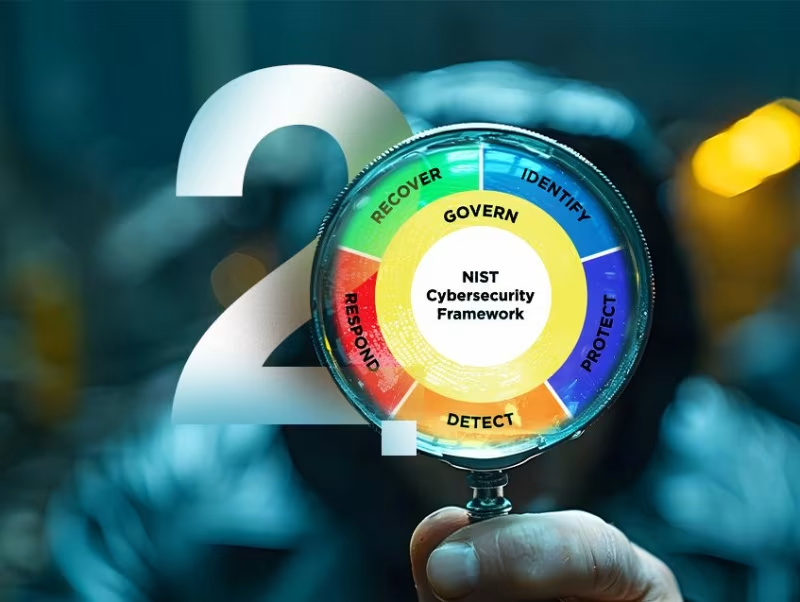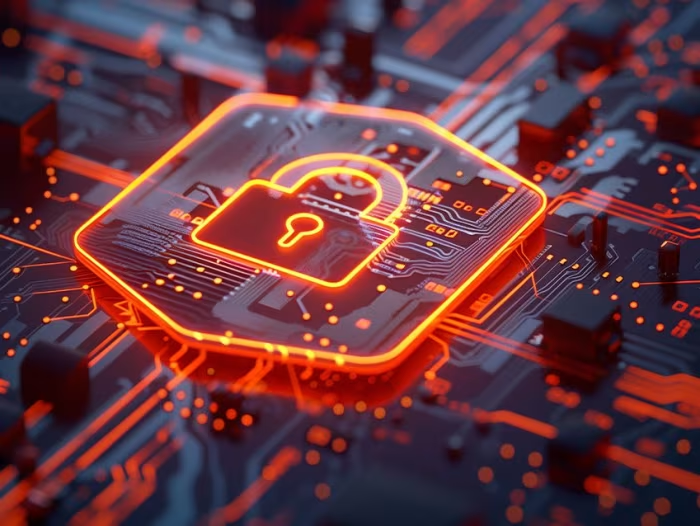Resource / Online Journal
Managing Risk with NIST Cybersecurity Framework (CSF) 2.0 in 2026
Understand the NIST Cybersecurity Framework 2.0 and its importance in 2026 to boost your organization's security posture and protect against evolving threats.
Published on Nov 18, 2025

The NIST Cybersecurity Framework (CSF) 2.0 is an essential tool for organizations. It was originally developed by the National Institute of Standards and Technology (NIST) to help protect critical infrastructure sectors.
In 2026, managing cyber risks effectively is more crucial than ever. CSF 2.0 provides a structured and flexible approach to identifying, assessing, and mitigating risks, aligning cybersecurity efforts with business objectives. Its proactive risk management capabilities help organizations anticipate threats, comply with regulations, and enhance resilience.
What’s New in NIST CSF 2.0
One of the most significant updates in CSF 2.0 is the introduction of the “Govern” function, which elevates cybersecurity governance to a foundational pillar alongside the original five functions: Identify, Protect, Detect, Respond, and Recover. This new function emphasizes executive accountability, policy alignment, and integration of cybersecurity into enterprise risk management frameworks.
As a flexible framework, CSF 2.0 can be tailored to different organizational needs and maturity levels. It also addresses modern challenges, such as cloud security, identity management, and privacy concerns.
It makes supply chain risk management a key focus area, integrating it into broader cybersecurity governance and risk mitigation strategies. NIST CSF 2.0 was released as a public draft in 2023 and the final version in February 2024.
CSF 2.0 Core Functions and Their Role in Managing Risk
CSF 2.0 is built around six core functions that form a comprehensive risk management methodology. They are:
- The Govern function - Ensures leadership oversight and strategic alignment.
- The identify function - Focuses on understanding the business environment, identifying critical assets, and assessing associated risks to prioritize cybersecurity efforts.
- The protect function - Implements appropriate safeguards to ensure the delivery of critical infrastructure services and limit the impact of incidents.
- The detect function - It emphasizes the timely discovery of cybersecurity events through detection processes such as continuous monitoring and anomaly detection.
- The Respond function - Involves taking appropriate actions in response to a detected cybersecurity incident or cybersecurity incident to contain and mitigate its effects.
- The Recover function - Ensures restoration of normal operations and enhances cyber resilience by restoring capabilities and data after an incident.
Implementing Risk Management Strategy with CSF 2.0
Successful implementation requires establishing governance structures with clear leadership responsibilities and risk ownership, including defining the organization's risk appetite and risk tolerances. Organizations must conduct a comprehensive risk assessment as a foundational activity to identify vulnerabilities and gaps.
Prioritizing these gaps helps manage risk by directing resources toward the most significant threats. CSF 2.0 encourages organizations to adopt a risk-informed approach and emphasizes continuous monitoring and iterative improvements to proactively manage risk and maintain an effective risk posture.
Emerging Risks in 2026 and Proactive Management with CSF 2.0
The cybersecurity environment in 2026 is characterized by emerging threats such as advanced persistent threats, ransomware, AI-powered attacks, Internet of Things (IoT) vulnerabilities, and supply chain risks. CSF 2.0 guides organizations to anticipate these threats through enhanced identification and governance mechanisms.
By integrating threat intelligence, automating detection, and applying proactive controls, organizations can both prevent and rapidly respond to incidents, reducing their impact and accelerating recovery. Managing cybersecurity risk is a core aspect of the framework's approach to these emerging threats, ensuring that proactive strategies are effectively implemented.
CSF 2.0 Benefits and Challenges
NIST CSF 2.0 offers organizations a comprehensive and structured approach with its six core functions providing a clear roadmap for improving critical infrastructure cybersecurity. The addition of the Govern function enhances cybersecurity governance, ensuring that cybersecurity efforts are strategically aligned with business objectives and regulatory demands.
This alignment helps organizations strengthen their cybersecurity posture, reduce cybersecurity risks, and better manage supply chain risks, which are increasingly important in today’s interconnected environment. However, implementing CSF 2.0 can present challenges, particularly for small and medium-sized enterprises, due to the resources and expertise required for full adoption.
Despite these hurdles, the framework’s flexibility and widespread recognition make it a valuable tool for organizations seeking to mitigate cybersecurity risks, improve risk management practices, and ensure business continuity. By leveraging CSF 2.0, organizations can enhance their ability to protect critical infrastructure and respond to evolving threats.
Continuous Improvement and Lessons Learned
CSF 2.0 promotes a culture of continuous assessment and improvement. NIST offers supplementary resources to help organizations understand, adopt, and use the CSF effectively. This adaptive approach ensures cybersecurity programs evolve with emerging threats and organizational changes, fostering resilience and long-term success in managing risk.
Conclusion
The NIST Cybersecurity Framework 2.0 is a future-ready model for managing cybersecurity risks in 2026 and beyond. Adopting CSF 2.0 helps organizations not only defend against today’s threats but also anticipate and adapt to the unknown risks of tomorrow.
You can explore its implementation in different sections like SOC or IAM, separately as well, whichever fits the best interest of the organization's cybersecurity risk strategy. You can explore its guidance and framework throughout your required services with TechDemocracy.
Recommended articles


How Do IAM, PAM, and CIAM Fit into the NIST Cybersecurity Framework?
Take Your Identity Strategy
to the Next Level
Strengthen your organization's digital identity for a secure and worry-free tomorrow. Kickstart the journey with a complimentary consultation to explore personalized solutions.